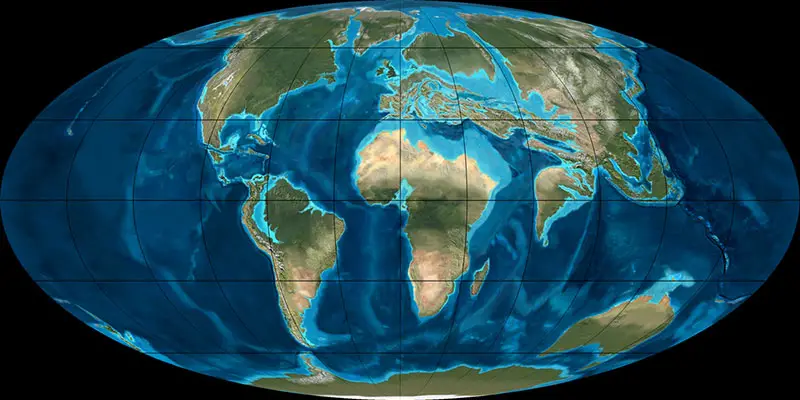†Myanmarpithecus (Amphipithecidae)
Myanmarpithecus ist eine Primatengattung innerhalb der Familie Amphipithecidae, deren 2 Mitglieder ab dem frühen Paläogen (Eozän) im Bartonium lebten, das vor ungefähr 41,3 Millionen Jahren begann und bis vor 38 Millionen Jahren andauerte. Viele Überreste wurden in Myanmar gefunden.
Myanmarpithecus aus der Familie Amphipithecidae (Unterordnung Anthropoidea) war im Eozän in Asien verbreitet.
Myanmarpithecus yarshensis
Das Typusexemplar hat die Bezeichnung NMMP-KU 0001a, Dabei handelt es ich um rechte Oberkieferfragmente, bei denen Pramolare und Molare (P4-M3) erhalten sind.
| Sammlung | Kommentar zum Fundort | Epoche, Alter | Geologie, Formation | Kommentar zur Sammlung |
|---|---|---|---|---|
| Yarshe, Pondaung Sandstone | Pondaung | Bh1 (of Kyoto University) | ||
| Kommentar z. Stratigraphie | Lithographie | |||
| The whole sequence of units was originally defined as the ‘Pondaung Sandstones’ by Cotter (1914), but the horizon yielding Eocene vertebrate fossils is now known as the ‘Upper Member’ of the Pondaung Formation (see Maung et al. 2005). The most recent age for this unit is ~39–38 Ma and so it can be regarded as middle Bartonian (see Tsubamoto et al. 2011). | fossils come from a dark red-brown mudstone |
| Physiologie | |
|---|---|
| Gewicht: | ? |
| Schwestertaxa | |
|
|
|
Literatur
M. Takai, N. Shigehara, A. K. Aung, S. T. Tun, A. N. Soe, T. Tsubamoto, T. Thein 2001, A new anthropoid from the latest middle Eocene of Pondaung, central Myanmar. Journal of Human Evolution. 40:5, p. 393 - 409G. Métais, N. Shigehara, A. K. Aung, S. T. Tun, A. N. Soe, T. Tsubamoto, T. Thein 2006, New basal selenodont artiodactyls from the Pondaung Formation (late middle Eocene, Myanmar) and the phylogenetic relationships of early ruminants. Annals of Carnegie Museum. 75:1, p. 51 - 67
